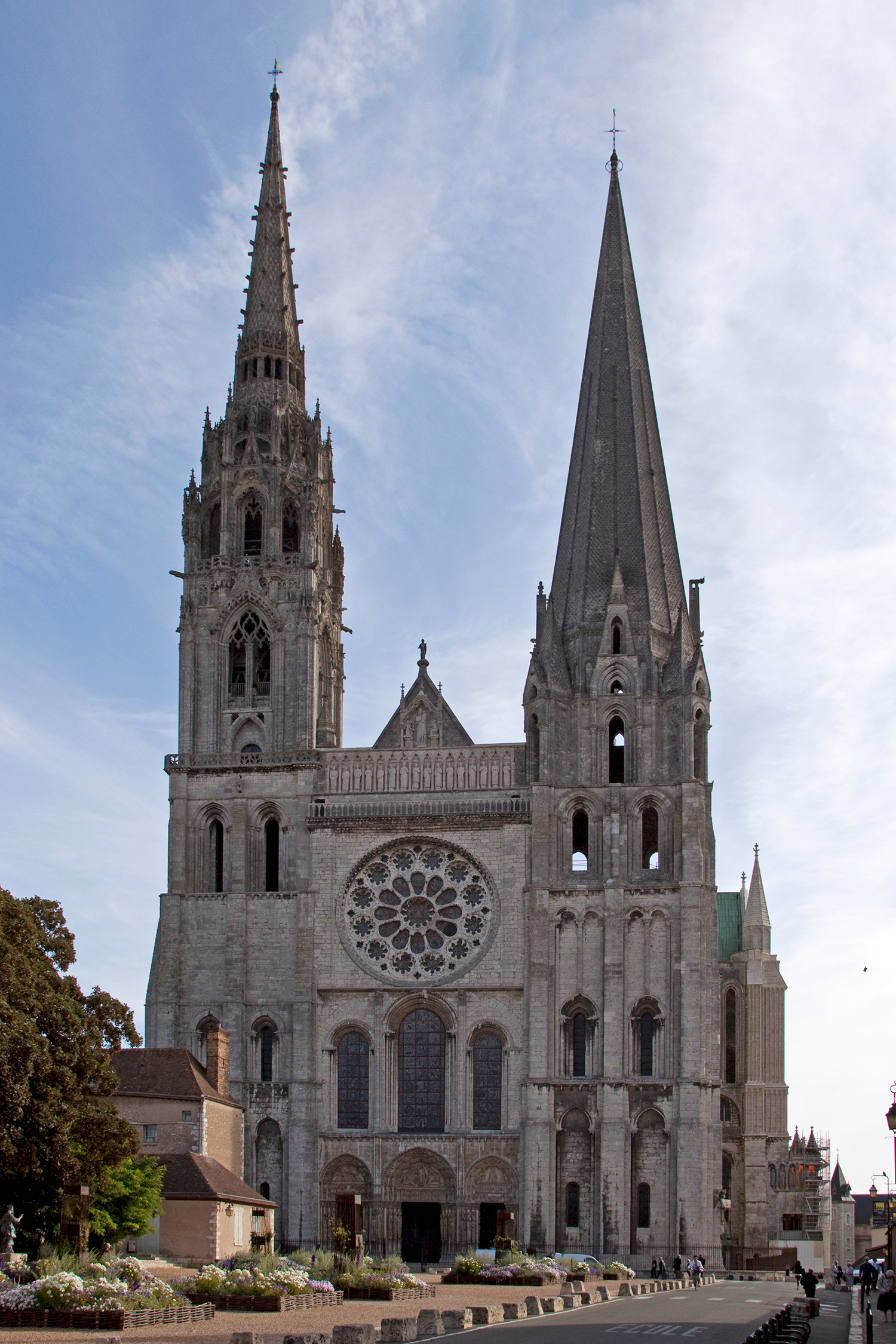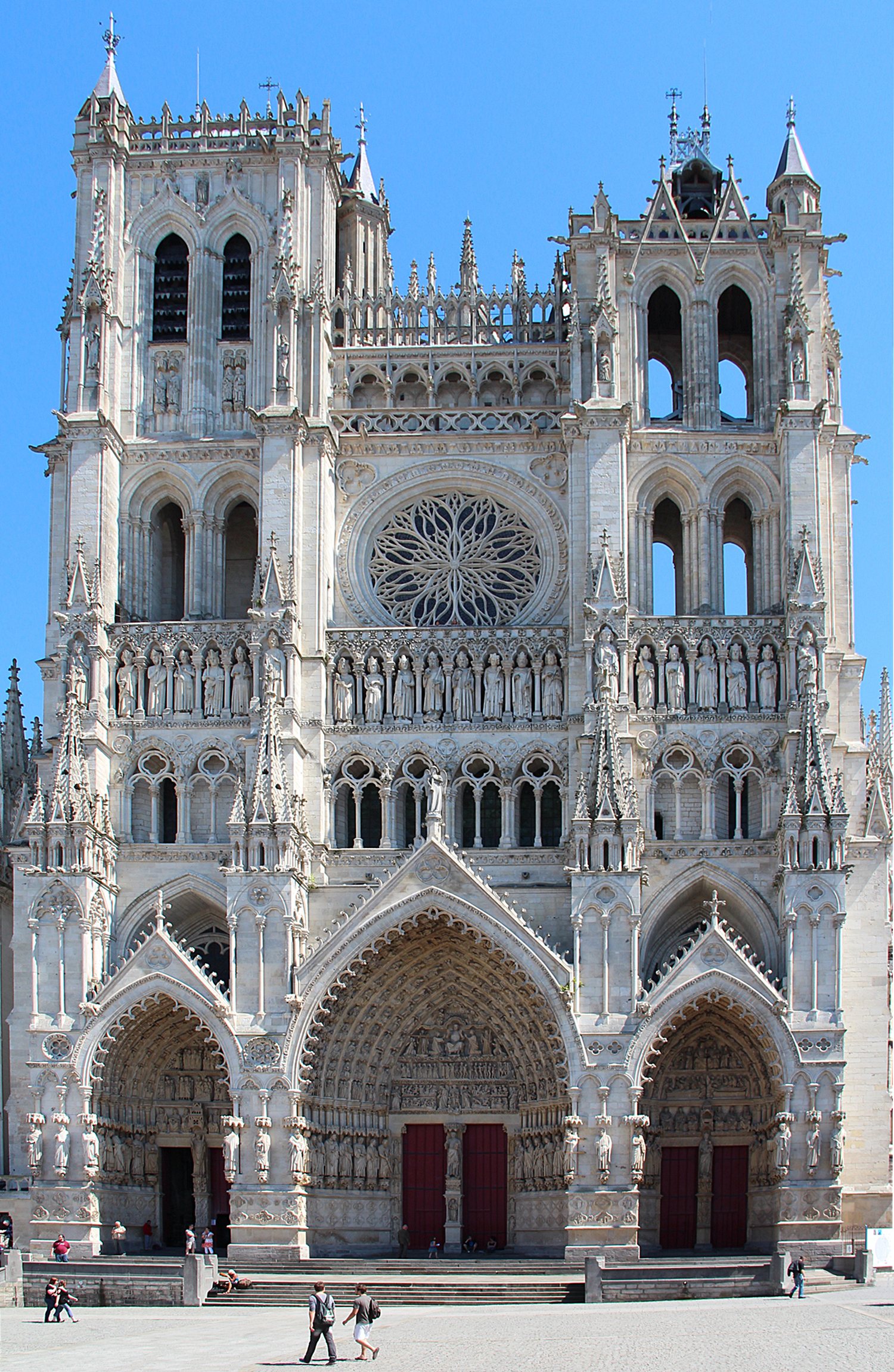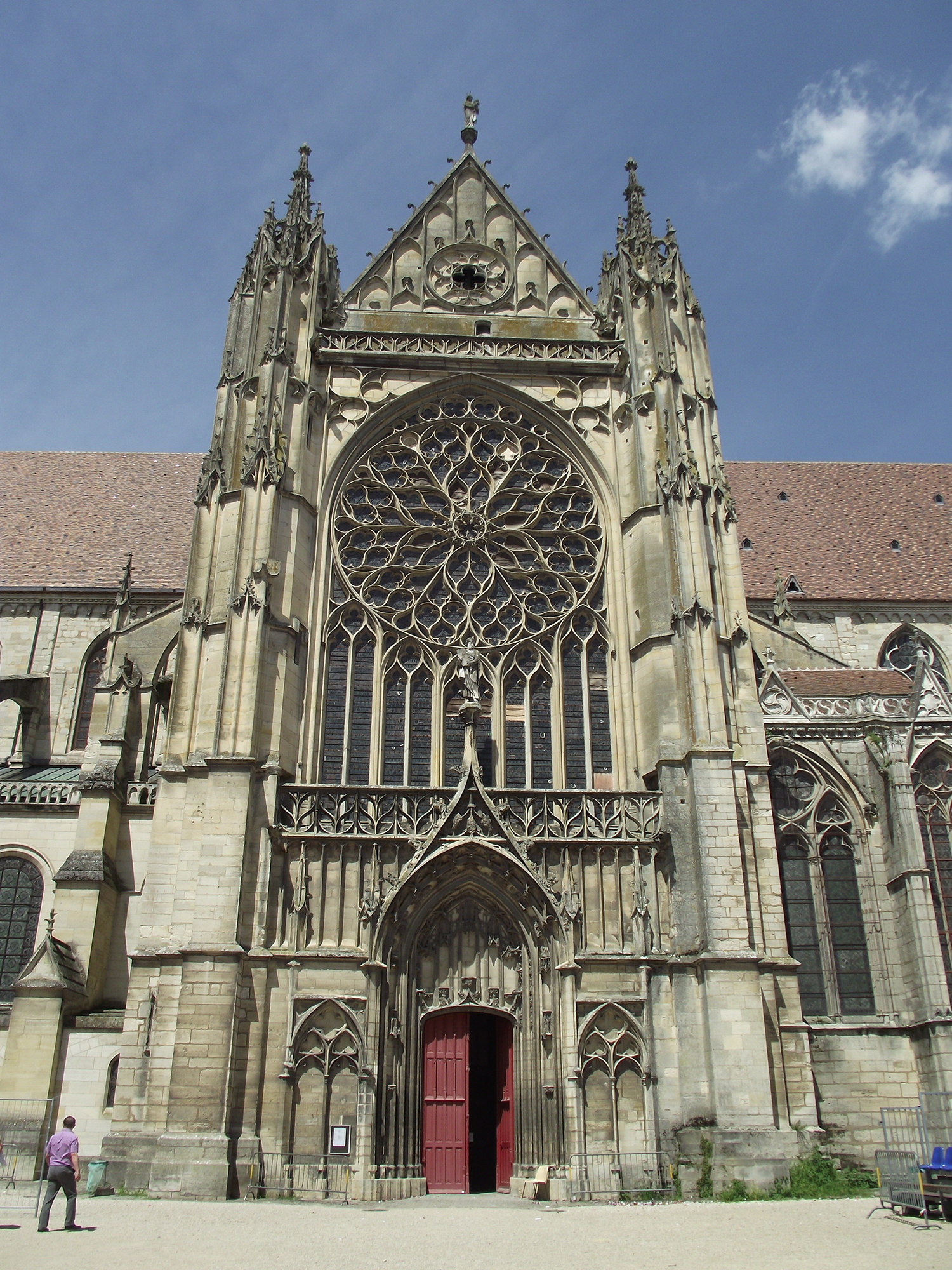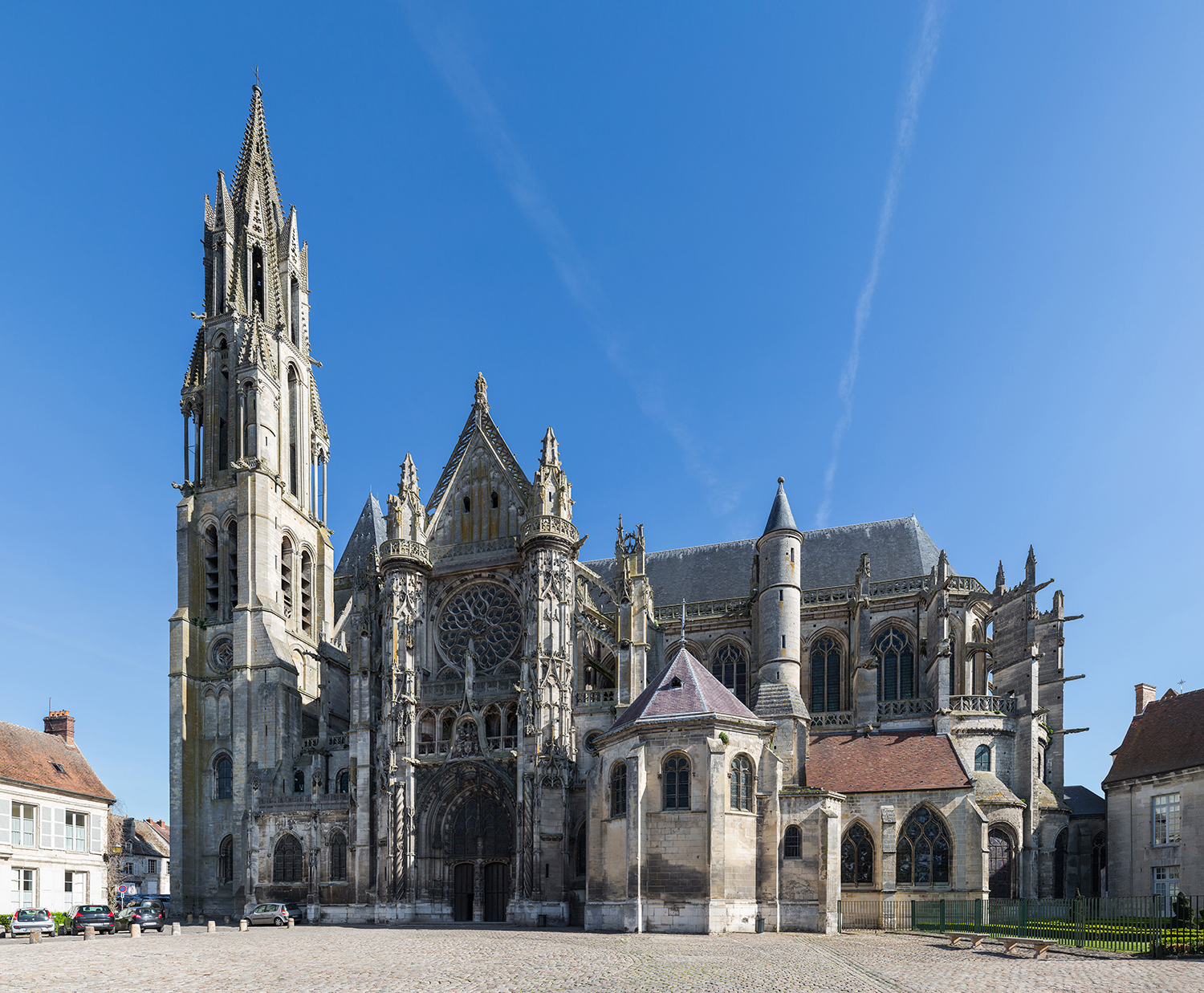The Gothic style of one of the most beloved churches in the world is echoed in cathedrals outside Paris.
Lenten Campaign 2025
This content is free of charge, as are all our articles.
Support us with a donation that is tax-deductible and enable us to continue to reach millions of readers.
Last month, the whole world expressed shock and despair as fire ripped through the Cathedral of Notre-Dame de Paris, arguably one of the most well-known churches in the world. What could have resulted into a catastrophe luckily turned out to be serious but manageable damage, with millionaires from across the world pitching in to support restoration works to return the Catholic landmark to its full splendor. In the meantime, visitors to France may be relieved to know that Gothic cathedrals “a-la-Notre-Dame” can be found all around Paris, from the suburban town of Saint Denis to northern city of Amiens and the southern city of Chartres.
These cathedrals were all built between 1140 and 1500, when the French state started to develop out of Ile de France into Paris’ surrounding region. At the time, the Kings of France were relying on advice from Suger, the abbot of Saint Denis, who was a trained historian and theologian. Suger, credited for “inventing” the Gothic style, ordered the renovation of the Cathedral of Saint Denis in a suburb just outside modern-day Paris in 1137. The choir of Saint Denis Cathedral is to this date considered the earliest example of Gothic style in Europe.
Gothic style featured the innovative development of elements that had already been in use in the Romanesque period, such as the pointed arch, ribbed vaults and stained glass windows. Thanks to more elaborate structural solutions, Gothic buildings were much taller and slimmer compared with the bulky Romanesque style. Rose windows were also much larger, allowing for an enhanced mystical effect in the church’s interiors. Statues depicting biblical scenes had already been used in the Romanesque period, but it was really during the Gothic period that architects made abundant use of elaborate sculptures to decorate buildings facades. The end results were imposing but “light” structures that really conveyed an idea of the sacred both inside and outside.
Here is a list of the most notable examples of the “other Notre-Dames.”
Basilica of Saint Denis, Saint Denis

Originally constructed in 475 and later re-built in Gothic style between 1135 and 1144, the Basilica of Saint Denis, in a northern suburb of modern day Paris, is considered to be the earliest example of Gothic architecture in Europe. The original church was built by order of St. Genevieve to host the remains of St. Denis, and from the 10th century it became the burial place for kings and queens of France.
In 1135, Abbot Suger ordered the restoration of parts of the church using innovative solutions that later became known as Gothic style. The western facade was re-designed with features that later became staples of Gothic architecture, such as a large rose windows in a rectangular frame, tall and thin statues of Old Testament prophets, and massive vertical buttresses. Suger, who was especially interested in the use of light to create a divine atmosphere, asked his masons to come up with innovative lighting solutions for the choir, considered to this day the first fully-fledged Gothic interior space. By allowing more space between structural elements developed out of Romanesque style, such as rib vaults, clustered columns and flying buttresses, Suger’s masons managed to create a very light but strong supporting structure with plenty of space for spacious windows, creating a distinctively “Gothic” light.
Plan a visit: From Paris, take the RER train “D” towards Gare de Creil. Get off at “Gare de Saint Denis.” Follow signs to “Cathedral de Saint Denis.” The Cathedral can be visited every day. Entry ticket: 9 Euros (free for under 26).
Cathedral of Notre Dame de Chartres, Chartres

Located 50 miles southwest of Paris, the UNESCO World Heritage Site of “Notre-Dame de Chartres Cathedral” (Our Lady of Chartres) was built between 1194 and 1220. Its exterior features two imposing towers, three massive facades decorated with hundreds of statues depicting scenes from the Bible, and a rounded rose window encircled in a square frame. Inside, it features a range of architectural masterpieces, including a choir surrounded by a monumental screen with hundreds of sculptures, a stunning labyrinth designed for pilgrims to walk, and three massive stained-glass windows that have been declared as “incomparable” by UNESCO. On top of being an architectural jewel, Our Lady of Chartres has been one of the most popular pilgrimage sites of France for centuries as it holds the famous Sancta Camisa, the tunic that Mary wore during Christ’s birth, which according to tradition was donated to the cathedral by Charlemagne after he received it from Emperor Constantine VI in Jerusalem.
Plan a visit: From Paris it takes a little more than an hour to travel to Chartres. Take a local train from Montparnasse station to “Gare de Chartres.” The Cathedral is about eight minutes away from the train station.
Cathedral Basilica of Our Lady of Amiens, Amiens

Built between 1220 and c. 1270, the Cathedral Basilica of Our Lady of Amiens has been listed as a UNESCO World Heritage Site since 1981. Its exterior is characterized by the heavy use of statues including 22 larger-than-life-sized kings and a series of granite statues of local saints including St. Domitius and St. Fermin. Inside, the clever use of pointed arches and rib vaults resulted in very tall but thin chambers, including a nave, an aisle and numerous chapels dedicated to martyrs and saints. Later additions of polychrome statues add to the brightness of the interiors. For centuries, Amiens was known as the location where the head of John the Baptist was kept. Today, a replica of the relic preserved in the north aisle still attracts pilgrims from all over the world.
Plan a visit: From Paris “Gare du Nord” take a local train to Boulogne Ville” and get off at “Amiens.” The cathedral is about ten minutes walk from the station.
Cathedral of Saint Etienne de Sens, Sens

A national monument of France, the Cathedral of Saint Etienne de Sens was the first church to be built from the start in Gothic style. Its internal vaulting design is typical of Gothic style, with a set of six vaults overarching a clerestory (a high part of a wall with windows above eye-level) with intermittent piers and columns. Outside, it features a massive rose window encircled in a rectangular frame decorated with elaborate engravings, an example of what’s known as “flamboyant Gothic.” Its bell tower, measuring 255 feet, is taller than that of Notre-Dame in Paris.
Plan a visit: Sens is located 62 miles southeast of Paris. From Paris train station “Gare de Lyon” take a local train to Laroche-Migennes and get off at Sens. Expected travel time of 1 hour and 30 minutes.
Cathedral of Notre Dame de Senlis, Senlis

Built between 1153 and 1191, the Cathedral of Notre Dame de Senlis is a historic monument of France. Its exteriors feature typical elements of Gothic architecture, such as a tall, thin bell tower, a large rose window within a square frame and elaborate statues depicting biblical scenes. The facade is contained within two tall columns that give the entire structure a sense of vertical movement towards the sky. Inside, sumptuously decorated stained glass windows and tall, narrow barred vaults create a distinctive “Gothic” light setting where empty spaces seems integral part of the design.
To visit: You can reach Senlis from Paris in an hour, but you will need to change trains en route. Tickets can be booked online or at any Paris train station.








